Eel restaurant in Kitakyushu-city
The most recommended local Eel cuisine is Steamed Eel that was born in Yanagawa
more than 300 years ago. Rice seasoned with a special sauce is topped by grilled
eel and thin shredded omelet, all of which is steamed in a bamboo steamer.
 |
 |
 |
December 21, 2024
Yoshinogari Remains, in Saga-prefecture
The largest archeological remains in Japan. Lie on the spacious hilly area in the north-eastern
part of Saga-prefecture. Remains of a ringed-dugout settlement presumably dating back to the
3rd century B.C. were unearthed there, and excavation is still underway at the site.
They are among the largest archeological remains in Japan.
 |
 |
 |
December 20, 2024
Rice terraces in Hoshino village, Fukuoka-prefecture
The most beautiful stone-built rice terraces in Hoshino village are those in Hirouchi and Uehara.
These rice terraces won the Minister of Agriculture and Forestry Award in the “Beautiful Japanese
Village Landscape Contest” in 1994, and were selected as one of the “100 Best Rice Terraces in
Japan” in 1999. The 425 terraces and 137 steps (230m difference in altitude) spread over an area
of about 12.6 hectares, and the beautiful staircase pattern follows the shape of the mountain.
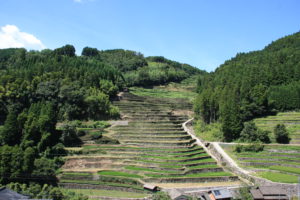 |
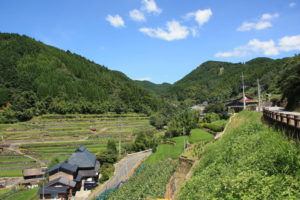 |
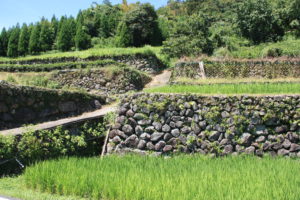 |
December 19, 2024
History of Japanese Christianity
Christian history in Japan was started when St. Francis Xavier came to Japan as a first Christian
missionary in 1549. Then Christianity was spread in Nagasaki region. However, unparalleled
hidden Cristian history was started from when Toyotomi Hideyoshi Shogunate proclaimed Christian
ban in 1587. During ban on Christianity, people secretly continued to faith while surviving in the
midst of the conventional society and Japanese religions.
Since ban on the Christianity was lifted in 1873, new Christian history in Japan has begun.
 |
 |
 |
December 18, 2024
Heart Rock, in Yame, Fukuoka-prefecture
Located in Yabe Village, Yame-city, on the north wall of the Hyuga Dam, which irrigates the
fields of Yame, is the Heart Rock (220m long, 180m wide), which has been drawing attention
as a power spot for finding love and achieving romance.
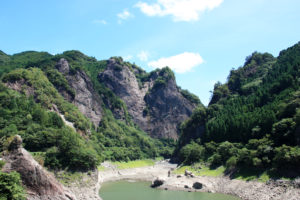 |
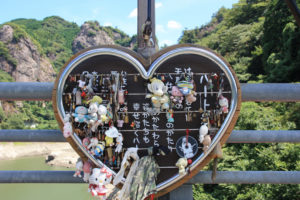 |
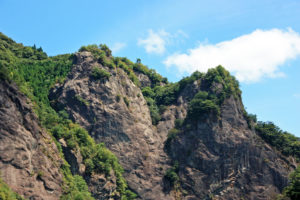 |
December 17, 2024
Shochu brewery, Beniotome Shuzo, in Fukuoka-prefecture
Let’s sample Chochu at Beniotome Shuzo. Shochu is a Japanese distilled beverage less
than 45% alcohol by volume. Typically shochu contains 25% alcohol by volume, which is
weaker than whisky or standard-strength vodka but stronger than wine and sake.
The shochu of Beniotome Shuzo is distilled from Sesame. The brewery can be visited and
there is a tasting corner, Let’s sample Chochu.
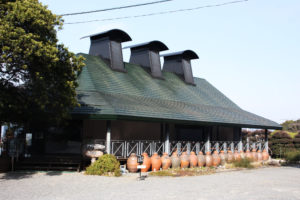 |
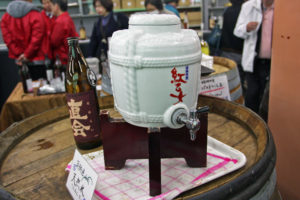 |
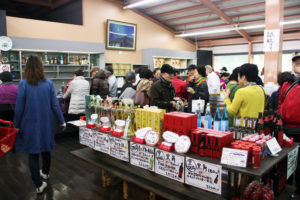 |
posted on December 16.2024
12 days Kyushu tour for Singapore Customer
Number of travelers : 4 persons
Schedule : December 3 to 14, 2024
Transportation : Private vehicle with English speaking driver
Where to visit : Itoshima, Nagasaki, Kumamoto, Ibusuki, Kagoshima, Takachiho
Aso, Yufuin, Beppu, Yanagawa, Fukuoka
 |
 |
 |
 |
What our Customer have to say
Hi Takako & MD Masa,
Thanks for reaching out to us. Indeed, we are thankful for the trip organised by your company
and we had much fun/laughter as a family, while having a deeper appreciation of Japan in
various aspects. Attached is our appreciation note to Mr Sekimoto who spent the bulk of his
time with us. He has a copy of this appreciation note and officially we would like to commend
him for his professionalism and provision of excellent service.
Many thanks once again.
posted on December 15, 2024
The oldest boatman for Yanagawa canal boat cruise
The most exciting experience in Yanagawa is Canal boat cruise.
Kachan Tanaka is the oldest boatman who is 87 years old.
He is a very good singer and is a friend of the popular singer Uchiyamada Hiroshi.
 |
 |
 |
December 14, 2024
Shinozaki Hachiman Shrine, I visit everyday
Shinozaki Hachiman Shrine near my house in Kitakyushu-city, I visit almost everyday
before going to the office to pray for world peace, safety of journey and happiness of people.
 |
 |
 |
December 13
12 days Kyushu tour for Singapore Customer
Number of travelers : 9 persons
Schedule : Nobember 20 to December 4, 2024
Transportation : Chartered bus with 25 seats
Tour guide : Licenced English speaking tour guide
Where to visit : Nagasaki, Kimamoto, Ibusuki, Kagoshima, Takachiho, Aso, Yufuin
Beppu, Kitakyushu, Yanagawa, Fukuoka
 |
 |
 |
 |
What our Customer have to say
Hi Takako san,
Thank you very much for all the arrangement that made our recent tour and stay in Kyushu
so enjoyable and memorable.
Would like to take this opportunity to thanks our guide, Junko san and our driver, Kazo san
who is a retired 7 stars JR train driver. Junko san had done a commendable job and Kazo san
with his excellent driving skill had ensured we arrived at each of the destination comfortably
and safely. Our 3 ‘little monsters’ (my grandchildren) enjoyed the interaction and accompany
of Junko san and Kazo san throughout the journey.
Junko san was our great time-keeper and constantly liaised with the restaurants to ensure
our delicious lunches were ready for us to enjoy on arrival. She and Kazo san also
recommended a few great eating outlets for us to enjoy our lunch. Although time was running
late, Kazo san went the extra mile to drive to us the southern most point of Satsuma peninsula
for us to enjoy the sunset view before heading to the hotel. We feel blessed and grateful.
Once again thank you for helping us in organising this tour and allowed us to have a wonderful
family time. Will contact you when we plan to visit Kyushu again to experience different seasons
of the year.
posted on December 7, 2024
